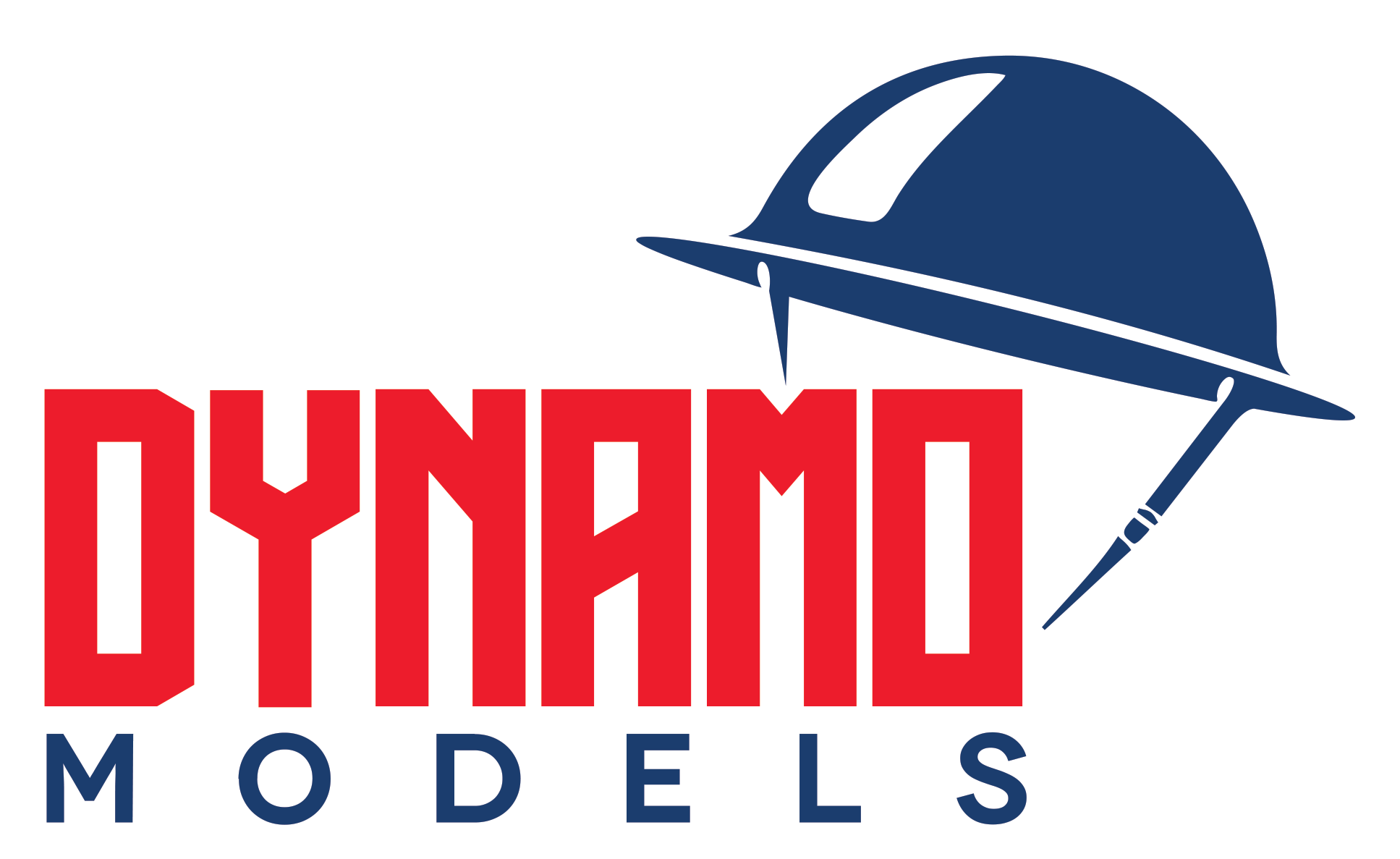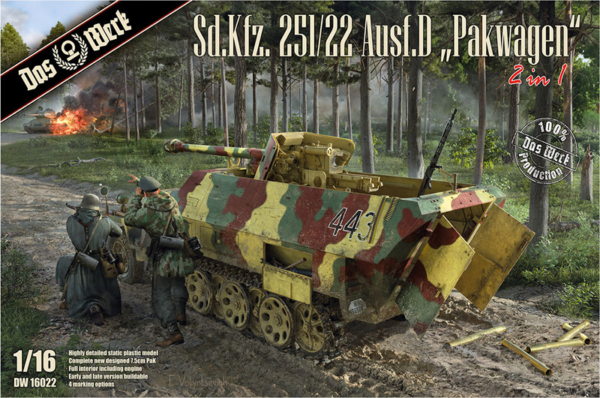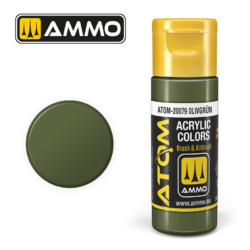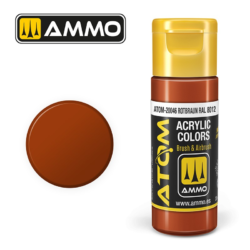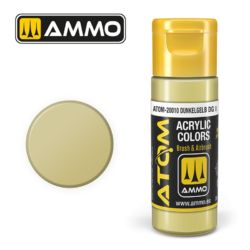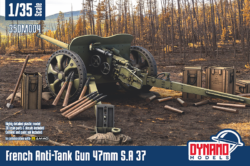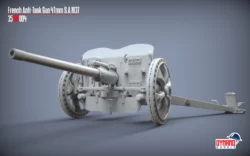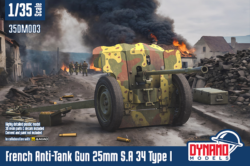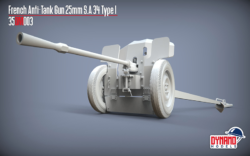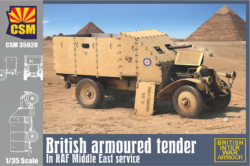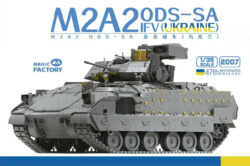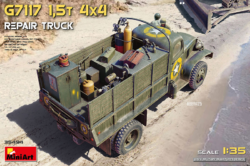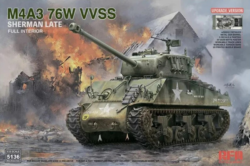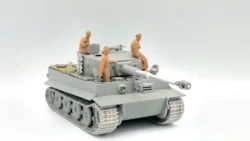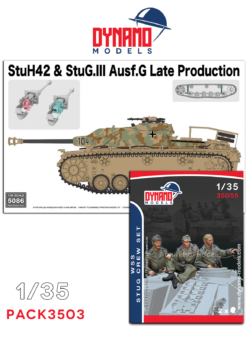Das Werk 16022 – Sd.Kfz.251/22 Ausf.D Pakwagen
134,50€
– Plastic model kit to build a Sd.Kfz.251/22 Pakwagen 1/16 Das Werk
– Scale plastic kit include photo-etch, clear parts and decals
– Model to be assembled and painted. Glue and paint not supplied.
1 en stock
The Das Werk 1/16 Sd.Kfz.251/22 Ausf.D Pakwagen (Kit No. DW16022) is a high-detail model kit of the German half-track vehicle equipped with a 7.5 cm Pak 40 anti-tank gun. This large-scale kit offers intricate detail and customizable options for realistic representation. Key features include:
- 7.5 cm Pak 40 Cannon: Newly developed and highly detailed.
- Detailed Interior and Exterior: Includes complete interior elements like the engine, gearbox, and detailed weapon mounts.
- Options for Early and Late Versions: Builders can choose between early and late production variants.
- Movable Tracks and Suspension: Features single-link track options and torsion bar suspension similar to the original vehicle.
- Clear Parts: For realistic windows and other transparent elements.
- Detailed Chassis: With an accurate representation of the cooling, exhaust, braking, and fuel systems.
This kit provides a realistic build experience for modelers seeking accuracy in both interior and exterior details.
Sd.Kfz.251/22 Ausf. D Pakwagen:
The Sd.Kfz.251/22 Ausf. D Pakwagen was a German half-track vehicle designed as a tank destroyer variant of the widely used Sd.Kfz.251 series. Introduced late in World War II, this model featured a 7.5 cm PaK 40 anti-tank gun mounted in the vehicle’s rear compartment, transforming the traditional personnel carrier into a formidable weapon against armored vehicles. This conversion represented Germany’s attempt to bolster anti-tank capabilities in response to the increasing presence of Allied armor on the battlefield.
Design and Armament
The Sd.Kfz.251/22 Ausf. D Pakwagen was structurally based on the Ausf. D version of the Sd.Kfz. 251 half-track, which was itself a streamlined and simplified iteration of earlier models. This variant was chosen for its improved production efficiency and ease of use. One of the most significant modifications in the Pakwagen variant was the installation of the 7.5 cm PaK 40 L/46 anti-tank gun, a high-velocity weapon capable of penetrating the armor of most Allied tanks at effective ranges. The gun was mounted in the vehicle’s rear troop compartment with limited traverse, allowing it to engage targets primarily from a stationary position while facing forward.
The vehicle’s open-top design, while improving situational awareness and facilitating rapid loading and firing, also exposed the crew to enemy fire and environmental hazards. Despite these vulnerabilities, the Pak 40’s firepower greatly enhanced the combat potential of the vehicle, making it a cost-effective solution in situations where traditional tank destroyers were unavailable or too expensive to produce in large numbers.
The Pak 40 gun on the Sd.Kfz. 251/22 could fire several types of ammunition, including armor-piercing shells (PzGr 39) and high-explosive rounds (SprGr 34), allowing it to take on both armored and unarmored targets. The vehicle typically carried around 22 rounds of 75mm ammunition, enough to engage in short skirmishes but requiring resupply during extended combat.
Performance and Mobility
The Sd.Kfz. 251/22 maintained the mobility and versatility that the Sd.Kfz. 251 series was known for. Powered by a Maybach HL 42 6-cylinder gasoline engine producing around 100 hp, it could reach speeds of up to 53 km/h on roads. This mobility was valuable for hit-and-run tactics and repositioning on the battlefield, making the Pakwagen adaptable to a variety of combat scenarios, from ambushes to direct engagements in support of infantry.
The half-track design provided adequate off-road capability, allowing the vehicle to traverse rough terrain that fully wheeled vehicles might struggle with. This mobility, combined with the firepower of the PaK 40, made the Sd.Kfz. 251/22 a flexible tool for German forces, particularly in defensive and delaying actions against advancing Allied armor.
Tactical Role and Operational Use
The primary role of the Sd.Kfz. 251/22 was as a mobile anti-tank weapon, designed to engage enemy armor from ambush positions or in a defensive setup. German units often employed these vehicles in ambush tactics, utilizing the vehicle’s speed to escape and reposition once detected by the enemy. The Sd.Kfz. 251/22 allowed German forces to create mobile anti-tank positions without requiring the dedicated tank destroyer units that were in short supply as the war progressed.
While effective in its designated role, the vehicle had limitations. Its relatively light armor meant it was vulnerable to both direct fire from tank guns and indirect artillery, and its open-top structure left the crew exposed to small arms fire and shrapnel. As a result, careful positioning and use of cover were essential for the survival of the vehicle and crew.
Legacy and Impact
The Sd.Kfz. 251/22 Ausf. D Pakwagen exemplified Germany’s adaptation to the changing demands of World War II. By repurposing existing vehicles, the German military was able to field additional anti-tank capabilities quickly and at a lower cost than developing and producing entirely new tank destroyers. While not as well-protected or powerful as dedicated tank destroyers, the Pakwagen provided a significant boost to infantry and mechanized units facing increasing numbers of Allied armored vehicles.
Today, the Sd.Kfz. 251/22 Pakwagen is remembered as an innovative, if improvised, solution that illustrates Germany’s tactical flexibility under resource constraints. Its combination of mobility and firepower made it a valuable asset, and it remains an example of World War II ingenuity in armored vehicle adaptation.
